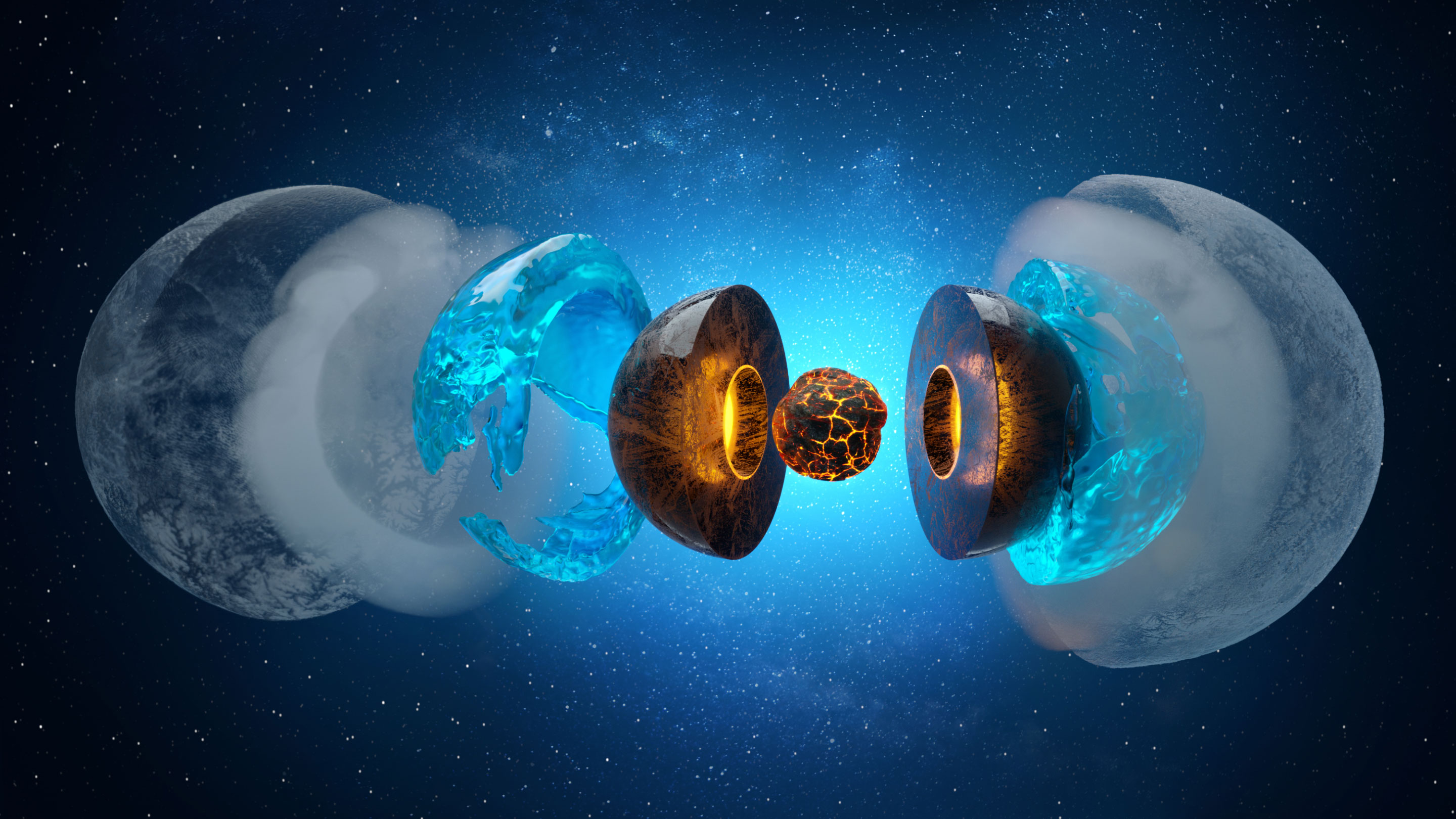
Image credit: @iammoteh for Quanta Magazine
Back of the envelope calculations reveal that Neptune and Uranus each have about 70 000 times the amount of water in Earth’s oceans. Under the pressures and temperatures found in Ice Giant planets, most of this water was predicted by First-Principles QMD simulations to be in a superionic phase. With guidance from our QMD simulations, two sets of experiments have been performed at the Omega laser in Rochester, NY. The first one allowed us to identify a phase transition consistent with the QMD simulations of the melting of superionic water and to measure the optical properties of superionic water that also were consistent with the QMD simulations: superionic water is black and melts at temperatures as hot as the surface of the Sun (Nature Physics, 2018). The second experiment allowed us to measure the crystal structure of the lattice of oxygen atoms in superionic water: it was found to be face centered cubic. This new phase of water was dubbed water XVIII. Further details are in the paper in Nature and was highlighted in Quanta magazine.
